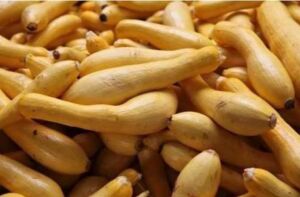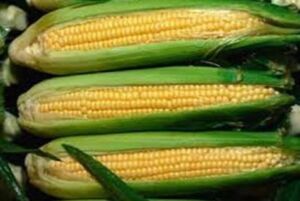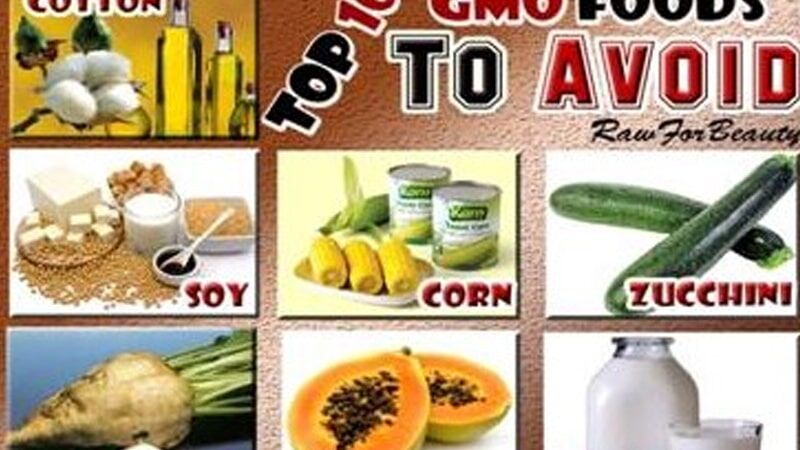As we strive to eat healthier and get in better shape. It is important that to remember that, while experts recommend certain foods that will inevitably help you to lose weight, it is important to remember to keep this article in mind— DRS
Now that the FDA has approved salmon as the first genetically modified animal for consumption, genetically modified organisms, or GMOs, have once again entered the spotlight.
GMOs, organisms whose genes have been manipulated to change certain characteristics, are revered by some for their potential to be more resistant to stressors like extreme weather, and pesticides, and for their ability to produce a higher yield. Others worry they will contaminate conventional populations or may pose major health concerns.
In April, Chipotle fueled the debate by announcing its new GMO-free menu. Another major source of controversy is that the FDA doesn’t require GMOs, many of which are banned in other countries, to be labeled as such. The only way to be sure a product hasn’t been modified is if it is labeled as “Non-GMO” by the Non-GMO Project, a non-profit organization, or if it’s marked “100% / Certified Organic.”
Many people think of produce when they think of GMOs, but there are many other foods that contain genetically modified ingredients — and it’s likely at least some of them have ended up in your grocery cart. Here’s a look at some of the top genetically-altered foods on the market now:
MILK

it isn’t allowed in some countries, including Canada, according to the American Cancer Society. If consumers are concerned about rBGH, they can check the packaging on their milk to see if it’s labeled rBGH-free.
SODA

engineered, with genetically modified corn accounting for 88 percent of the corn planted in 2012, the FDA said.
Many diet drinks like diet sodas and diet juices or sugar-free juices and sodas contain aspartame. Aspartame is an artificial sweetener used instead of sugar by many people. There is some question concerning the safety of aspartame in the body, including its possible link to certain cancers. Aspartame is manufactured from genetically modified bacteria. Other products containing high fructose corn syrup include juice drinks, certain bread and crackers. The fact that GMOs are hidden in products like these make it much more difficult for Americans to identify whether or not they are eating GMO-free
SOUP

prevalent GMO crops like soy, cotton, canola and sugar beets are used to make ingredients common in packaged foods. As a result, more than 70 percent of packaged food products in the U.S. contain GMOs.
Be mindful when you begin thickening your soups with corn starch. Remember some things you love may not love you back and in time you could find yourself visiting your doctor complaining of illnesses or joint pains.
YELLOW SQUASH

Squash was classified as one of the major crops with genetic engineering varieties by the FDA. There are two varieties of genetically modified squash, but they are not commonly found in supermarkets and only make up an estimated 25,000 acres of farmland, TIME reported Yellow squash has been modified with the proteins to make it insect resistant. This plant is very similar to zucchini and both have also been modified to resist viruses
VEGETABLE OIL

The soybean has the second-highest number of genetic varieties approved in the U.S. as of 2015, TIME said. There are 20 different types of soybean being produced in the U.S., compared to 33 kinds of corn. Soy accounts for 61 percent of U.S. vegetable oil consumption, and it’s also found in many processed foods. Canola oil is derived from rapeseed oil. It is considered one of the most chemically altered oils sold in the U.S.
CHIPS

CORN

SOYBEANS

The genetic engineering of plants and animals is looming as one of the greatest and most intractable environmental challenges of the 21st Century.
Currently, up to 92% of U.S. corn is genetically engineered (GE), as are 94% of soybeans and 94% of cotton (cottonseed oil is often used in food products). It has been estimated that upwards of 75% of processed foods on supermarket shelves – from soda to soup, crackers to condiments – contain genetically engineered ingredients.
By removing the genetic material from one organism and inserting it into the permanent genetic code of another, the biotech industry has created an astounding number of organisms that are not produced by nature and have never been seen on the plate.
These include potatoes with bacteria genes, “super” pigs with human growth genes, fish with cattle growth genes, tomatoes with flounder genes, corn with bacteria genes, and thousands of other altered and engineered plants, animals, and insects.
At an alarming rate, these creations are now being patented and released into our environment and our food supply.
A Question of Risk
A number of studies over the past decade have revealed that genetically engineered foods can pose serious risks to farmers, human health, domesticated animals, wildlife, and the environment.
Despite these long-term and wide-ranging risks, Congress has yet to pass a single law intended to manage them responsibly. The haphazard and negligent agency regulation of biotechnology has been a disaster for consumers and the environment.
Unsuspecting consumers by the tens of millions are purchasing and consuming unlabeled GE foods, despite a finding by U.S. Food & Drug Administration scientists that these foods could pose serious risks.
Top 10 Most Common GMO Foods

